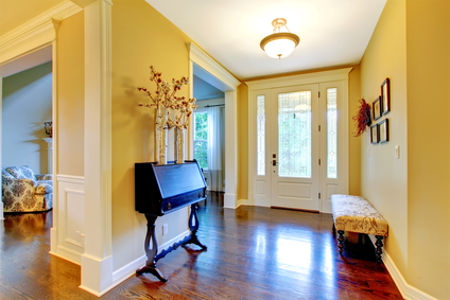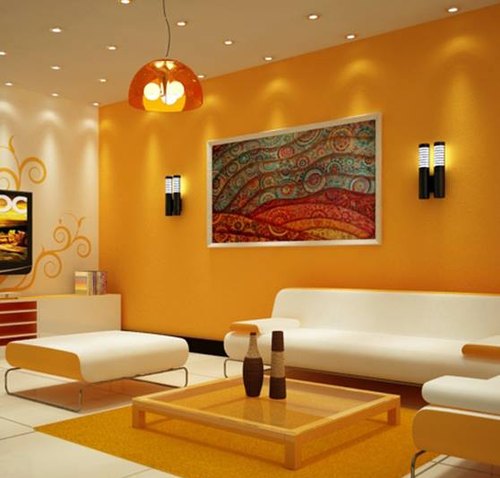Professional Color Consultation in Lakewood for Stunning Home Design
Enhance Your Inside Style With Comprehensive Shade Assessment
The assimilation of color consultation into indoor layout presents an one-of-a-kind chance to fine-tune and boost the emotional and visual resonance of a space. By engaging with an experienced color professional, you can browse the intricacies of shade choice, making certain that your options not only enhance building functions but likewise reverberate with individual design and psychological influence. This calculated partnership can substantially affect the total ambience of your environment, cultivating a sense of consistency and objective. Nevertheless, comprehending the nuances of this process is necessary-- what key aspects should be considered to attain optimum outcomes?
Advantages of Shade Assessment

In addition, color consultation help in optimizing all-natural light and optimizing spatial understanding. Lighter tones can make a room appear more expansive, while darker tones create an intimate setting. Cleveland Metro Painting Specialists. This calculated application of color can considerably affect the total atmosphere of any type of interior area
In addition, specialist experts possess a thorough understanding of present trends and ageless standards, guaranteeing that the selected shades will remain enticing over time. This foresight can save customers from pricey redesigns in the future. Lastly, color consultation empowers customers by providing them with a clear vision and direction, fostering self-confidence in their style selections and eventually bring about an extra satisfying and successful indoor design result.
Recognizing Color Psychology
The value of color psychology in interior design can not be overstated, as it dives into the emotional and emotional results that different shades can evoke in individuals. Shades can affect mood, habits, and also efficiency, making them an important consideration in any type of layout project.
As an example, cozy colors such as red, orange, and yellow are typically linked with energy and warmth. They can boost feelings of enjoyment and comfort, making them appropriate for social spaces like living spaces or cooking areas. On the other hand, great shades like blue, green, and purple tend to evoke peace and serenity, making them suitable for rooms or reflection areas.
Furthermore, using neutral tones can develop a well balanced environment by enabling the bolder shades to stick out without overwhelming the detects. Understanding these mental effects makes it possible for designers to develop areas that not just look cosmetically pleasing yet also advertise psychological wellness.
Including shade psychology right into interior layout entails a thoughtful option of tones customized to the desired feature of each space, eventually enhancing the general experience for read this article its owners. This awareness is important for achieving a functional and unified indoor setting.
The Shade Wheel Clarified
It consists of primary shades-- red, blue, and yellow-- that can not be created by mixing other shades. Tertiary shades result from blending a key and an additional shade, leading to shades such as red-orange and green.
The color wheel aids developers realize the partnerships between colors, consisting of corresponding, analogous, and triadic plans. Complementary shades, positioned opposite each other on the wheel, develop vibrant contrasts that can invigorate a room. Comparable shades, located beside each other, supply a unified and cohesive look. Triadic systems use three uniformly spaced colors, providing equilibrium and visual interest.
Utilizing the shade wheel in indoor style not just boosts aesthetic appeal yet additionally evokes certain emotions and ambiences, making it a critical recommendation for color appointment. Comprehending these partnerships ultimately encourages developers to create spaces that are both visually exciting and useful.
Choosing the Right Palette
Often, picking the appropriate combination is a decisive variable in attaining a successful interior decoration task. A well-chosen color design can merge a room, boost its functions, and stimulate wanted feelings. To begin, take into consideration the objective of the space. Different rooms serve varied functions and require palettes that reflect their desired use; for example, serene shades such as soft blues or eco-friendlies work well in bedrooms, promoting leisure.
Following, think about the natural light offered. Light can considerably alter exactly how colors show up, so it is important to examine the area at different times of the day. Additionally, take into consideration existing building elements and furnishings. An unified palette should complement these features, developing a cohesive look throughout the space.
When selecting colors, make use of the 60-30-10 guideline, which recommends that 60% of the area should be a leading shade, 30% an additional color, and 10% an accent color. This ratio makes certain balance and aesthetic passion (Cleveland Metro Painting Specialists). Example shades on the walls prior to committing, as this allows you to see exactly how the tones connect with one another and the overall setting they create in your interior style job.
Functioning With a Color Expert

When working with a shade professional, the procedure generally begins with a first consultation. During this conference, you'll review your vision, preferences, and the existing aspects in your area. The professional will certainly analyze your needs and may advise specific color schemes that align with your goals.
After establishing a direction, the expert will certainly provide samples and aesthetic help to assist you visualize the proposed color pattern. This action is essential, as shades can show up in different ways under differing lighting conditions.
In addition, a shade specialist can guide you in choosing corresponding furnishings, art work, and devices to harmonize with your selected scheme. By collaborating closely, you can accomplish a refined aesthetic that elevates your interiors and develops an inviting ambience. Ultimately, the competence of a shade consultant can significantly enhance the overall effect of your style project.
Verdict
In recap, extensive color examination offers as a here are the findings crucial device for improving indoor design. By leveraging professional expertise of color psychology and spatial characteristics, a tailored color palette can be created to evoke details feelings and create an unified environment.
By involving with a skilled shade consultant, you can browse the intricacies of shade selection, guaranteeing that your options not only complement architectural features but likewise reverberate with personal design and mental impact. It consists of main colors-- red, blue, and yellow-- that can not be developed by blending other shades.The shade wheel helps designers understand the relationships between colors, consisting of complementary, analogous, and triadic systems.When selecting colors, use the 60-30-10 regulation, which suggests that 60% of the area must be a leading color, 30% a second color, and 10% an accent shade. By leveraging specialist official source expertise of shade psychology and spatial characteristics, a tailored shade combination can be developed to evoke details emotions and create an unified setting.